Nikon D7200 and D7500 are both semi-professional DSLRs, engineered for those who want to shoot with a high-performing camera. While boasting an impressive set of technical specifications, the camera body alone won’t be sufficient to produce award-winning pictures. So what are the best lenses for Nikon D7200 and D7500 cameras?
Best Lenses for Nikon D7200 and D7500
Choosing the right lens for your intended use is fundamental to allow for your creativity to fully express itself. That is why we tested these best lenses for Nikon D7200 and D7500 cameras available on the market.
We’ve accounted for different price ranges, build, and glass quality, to make choosing between different products a little less nerve-racking.
Let’s start.
Nikon 35mm f1.8

An affordable, super sharp, and extremely compact lens, this 35mm prime lens is essential for landscapes, portraits, or street photography. With a fixed aperture of f1.8, it is fast and powerful even in low light conditions. The Nikon 35mm f1.8 is a solid choice for both the indoor and outdoor photographer.
You’ll love the flexibility of this lens, because of its low light performance and ability to include ample background.
Choose the Nikon 35mm f1.8 if:
You are a looking for a compact, quick and affordable lens. This prime lens is sure to produce high-quality images with your Nikon D7500 or D7200 body.
| Nikon 35mm f1.8 Specifications | Canon 70-200mm f/2.8L IS II USM Specifications |
|---|---|
| Weight | 7.1oz |
| Length | 2.8″ |
| Category | Prime |
| Largest Aperture | f1.8 |
| Image Stabilization | No |
Sigma 17-50mm f2.8 EX DC OS HSM

If you are looking for a substitute for your standard multi-purpose kit lens, the Sigma’s 17-50mm f2.8 is an excellent candidate. This bright zoom lens will please street and travel photographers thanks to its focal length ranging from a wide 17mm. Which makes it suitable for landscape captures, to a 50mm, great for close-up portraiture.
It maintains a large aperture of f2.8 throughout. Plus, it offers an anti-shake feature, handy if you are shooting on the go or in low light conditions.
Also, the Sigma 17-50mm is much sharper than the standard Nikon 18-55mm kit lens, with good image quality on all apertures.
It is complete with a Super Multi-Layer glass coating that prevents flare and ghosting.
Buy a Sigma 17-50mm f2.8 EX DC OS HSM if:
You are in search of a sharp, all-around lens to rely on in all light conditions.
| Sigma 17-50mm f2.8 EX DC OS HSM Specifications | Canon 70-200mm f/2.8L IS II USM Specifications |
|---|---|
| Weight | 19.9oz |
| Length | 3.62″ |
| Category | Zoom |
| Largest Aperture | f2.8 |
| Image Stabilization | Yes |
Nikon 85mm f1.8G
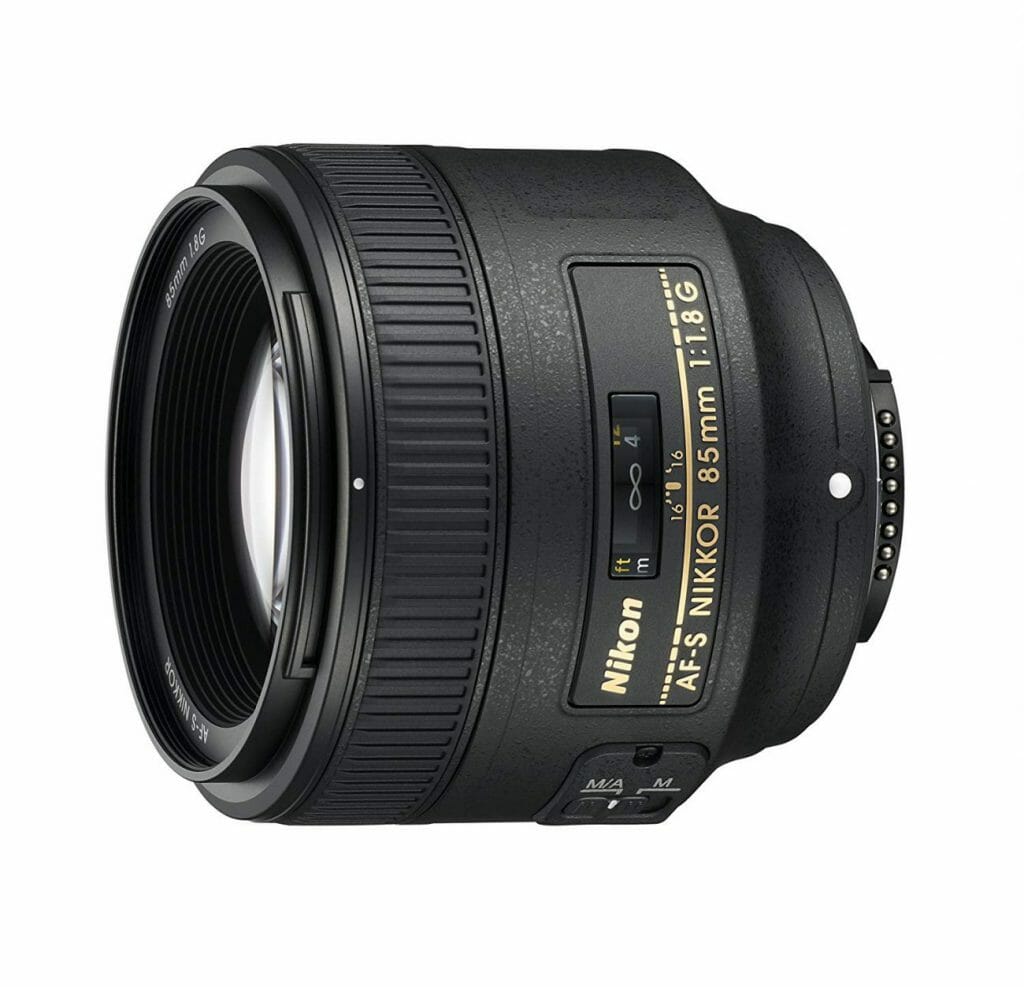
There are many pros and cons in opting for a prime lens rather than a zoom lens, but when it comes to portraiture, there is no need to be overwhelmed by doubt. This fixed 85mm is the sharpest lens produced by Nikon. That is why we are recommending it as one of the best lenses for Nikon D7200 and d7500 bodies.
It will bring to life the subject in your photographs, thanks to its ability to capture the tiniest of details with the highest image quality.
With an elegant looking bokeh created by the f1.8 aperture and a reliable internal autofocus system, the figures you capture will stand out against a beautifully blurred background. Moreover, the ample aperture will allow you to shoot unintrusively even in low light conditions.
The Nikon 85mm f1.8 G is the key piece of equipment to take your portrait skills to the next level.
Buy a Nikon 85mm f1.8G if:
You want to develop your portrait photography skills through a light, extremely sharp lens.
| Nikon 85mm f1.8G Specifications | Canon 70-200mm f/2.8L IS II USM Specifications |
|---|---|
| Weight | 12.39oz |
| Length | 2.9″ |
| Category | Prime |
| Largest Aperture | f1.8 |
| Image Stabilization | Yes |
Sigma 50mm F1.4 Art DG HSM
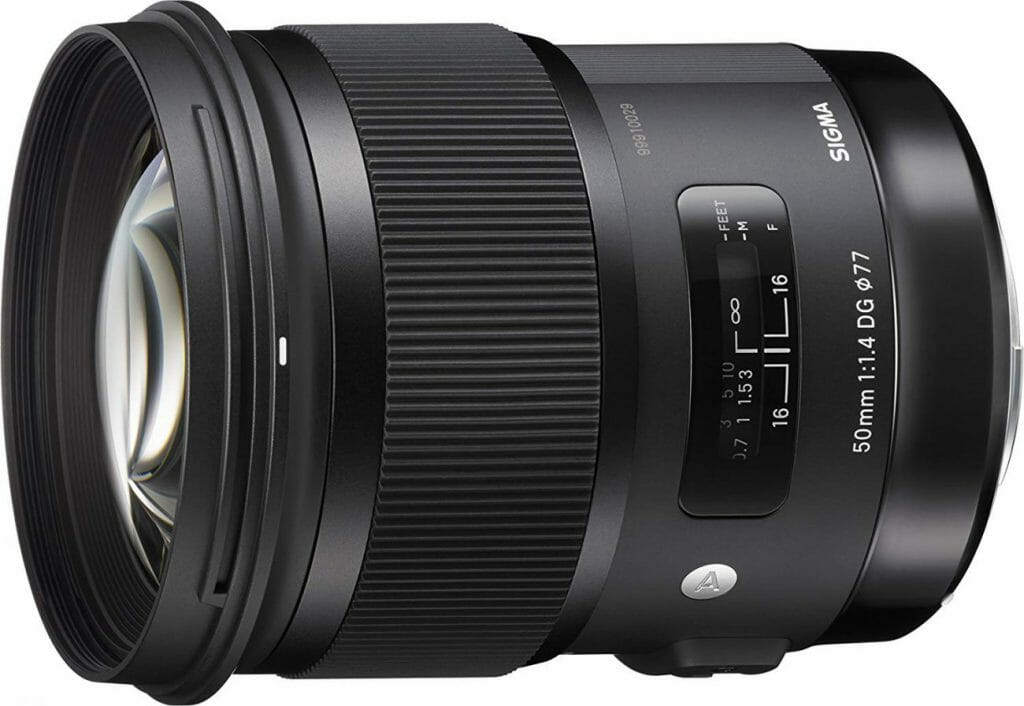
No tool kit would be complete without a 50mm prime lens, and this Sigma f1.4 is an excellent choice if you are seeking a high-end piece of equipment ideal for portraits, still-life photography, or video. Sigma’s “Art” line has been recently developed to allow photographers to fully express their creativity through lenses that produce high-contrast pictures paired with beautiful bokeh, favoring image quality over multifunctionality.
The Sigma 50mm F1.4 DG HSM Art includes a Hyper Sonic Motor (HSM) that guarantees silent and accurate autofocusing. It is complete with Special Low Dispersion (SLD) glass and a Super Multi-Layer Coating to reduce chromatic aberrations and flare.
The lens is meant for full frame cameras, by using it on your Nikon D7500 or D7200, it will become equivalent to a 75mm prime lens, perfect for portraits and studio shots.
Buy a Sigma 50mm F1.4 Art DG HSM if:
You are obsessed with details, image quality, and colors.
| Sigma 50mm F1.4 Art DG HSM Specifications | Canon 70-200mm f/2.8L IS II USM Specifications |
|---|---|
| Weight | 28.7oz |
| Length | 3.9″ |
| Category | Prime |
| Largest Aperture | f1.4 |
| Image Stabilization | Yes |
Nikon AF-S DX NIKKOR 10-24mm f3.5-4.5G ED
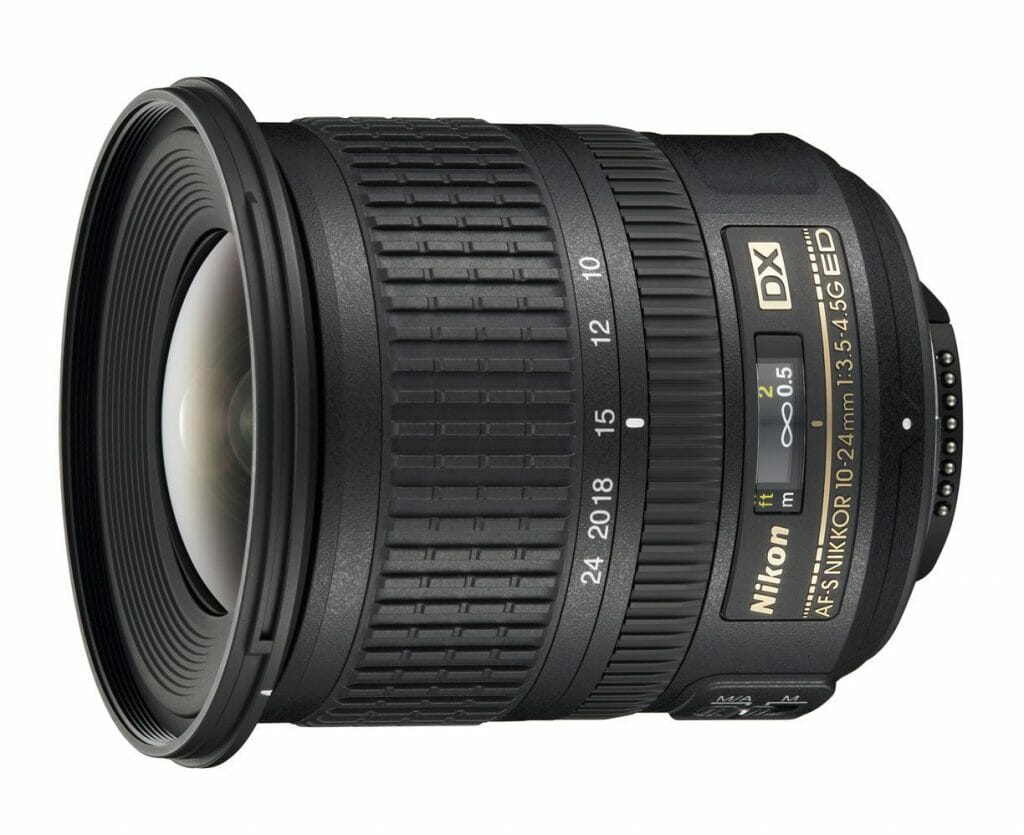
Whether you are an urban dweller trying to frame the architectural details of a city or a backcountry explorer willing to freeze a mountainscape at golden hour, the Nikon 10-24mm gets the job done.
The ultra-wide-angle focal length of this lens makes it possible to capture those subjects that can’t be squeezed in most lenses, such as interiors, large buildings or majestic landscapes. If you are an architecture or landscape photographer, this is one of the best lenses for Nikon D7500 or D7200 bodies.
Thanks to its Silent Wave internal motor, autofocus is fast and precise, and with three aspherical elements composing the optical design, spherical aberration is reduced to a minimum (although some degree of distortion appears at the wider end).
Buy a Nikon AF-S DX NIKKOR 10-24mm f3.5-4.5G ED if:
You are an architectural or landscape photographer looking for an ultrawide lens with a great focal range.
| Nikon AF-S DX NIKKOR 10-24mm f3.5-4.5G ED Specifications | Canon 70-200mm f/2.8L IS II USM Specifications |
|---|---|
| Weight | 16.3oz |
| Length | 3.43″ |
| Category | Zoom |
| Largest Aperture | f3.5 |
| Image Stabilization | Yes |
Tamron 70-200mm f2.8 Di VC USD SP G2
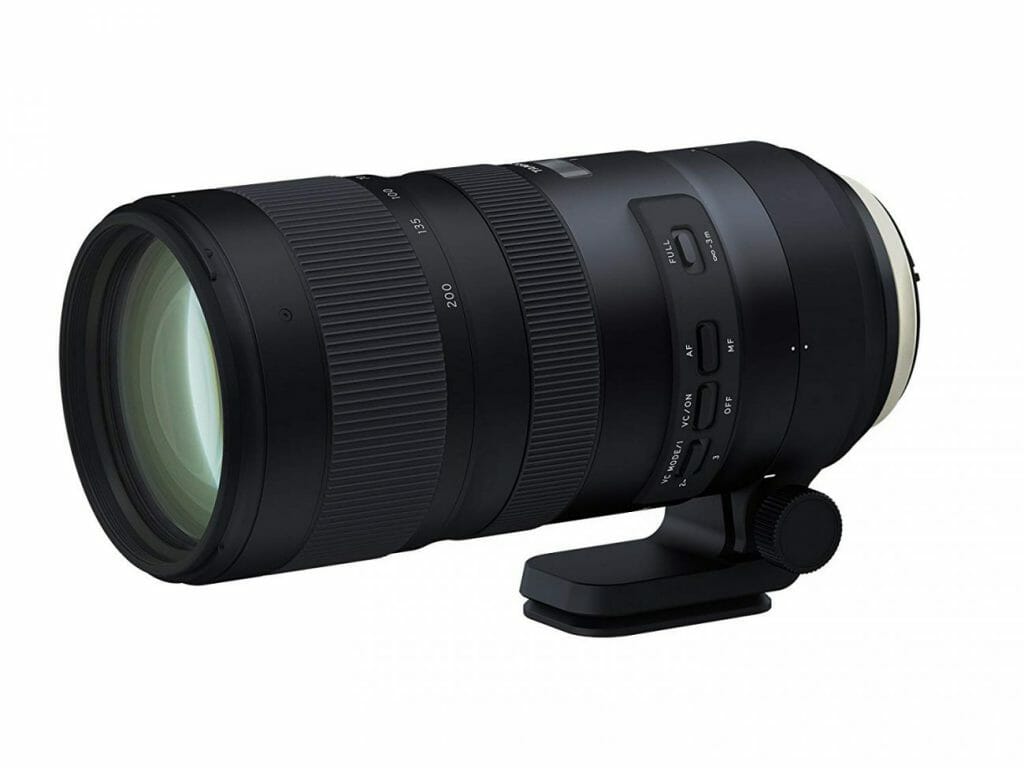
While the Tamron 70-200mm f2.8 Di VC USD SP G2 is a cheaper alternative to most of Nikon’s medium telephoto lenses, you shouldn’t equate the lower price point to lesser quality.
In terms of performance, Tamron’s lens is just as effective as Nikon’s 70-200mm f2.8, with excellent sharpness and realistic color rendering. The Tamron 70-200 might not have the solid, sturdy build that Nikon offers, but unless you are planning to shoot in harsh weather conditions, you can confidently save your money.
The Vibration Compensation (VR) system works smoothly and will be of great help when you are capturing moving subjects from a distance. The Tamron 70-200mm f2.8 is a lens you can rely on in a great number of situations. That is why we are recommending it as one of the best lenses for Nikon D7500 or D7200 cameras for shooting wildlife, wedding, or concert photography.
Buy a Tamron 70-200mm f2.8 Di VC USD SP G2 if:
You need a versatile medium telephoto lens to capture beautifully detailed images from a distance.
| Tamron 70-200mm f2.8 Di VC USD SP G2 Specifications | Canon 70-200mm f/2.8L IS II USM Specifications |
|---|---|
| Weight | 52.9oz |
| Length | 7.6″ |
| Category | Zoom |
| Largest Aperture | f2.8 |
| Image Stabilization | Yes |
Nikon AF-S NIKKOR 24-70mm f2.8G ED
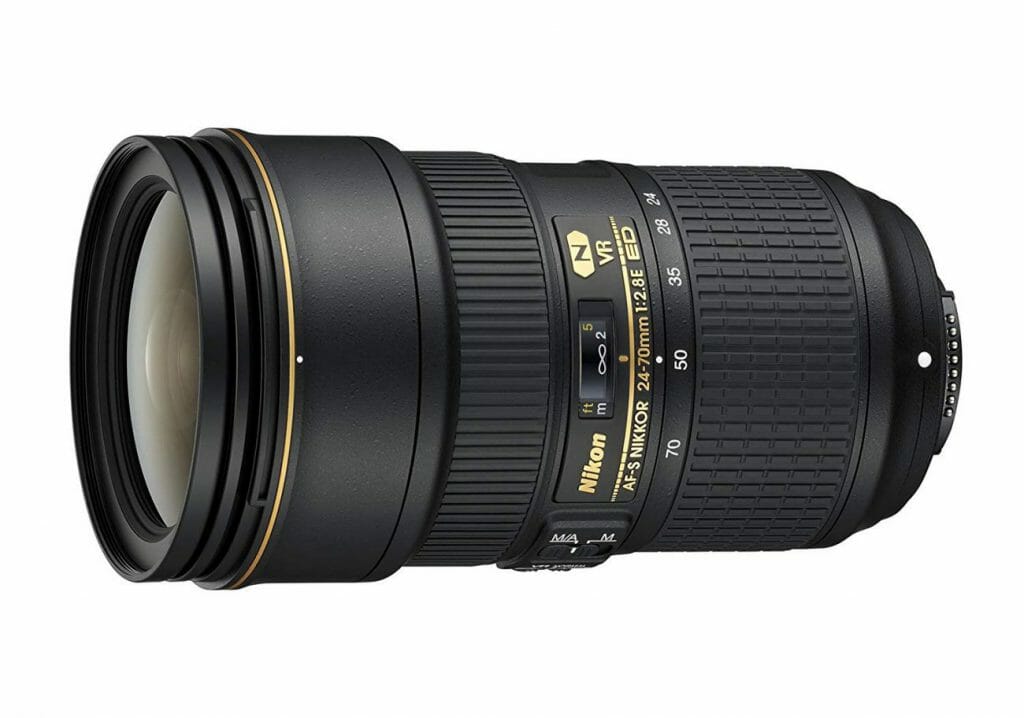
The AF-S NIKKOR 24-70mm f2.8G ED is one of the most popular lenses among professional street, travel, and documentary photographers, because of its power to capture great pictures in any situation. It will surprise you for its speed and flexibility. This high-end lens is expensive, but for a good reason, since it is likely the only lens you will ever need. Ranging from a wide-angle 24mm, suitable for both indoor and landscape photography, to a 70mm optimal for portraiture, this glass will help you compose richly detailed images from a variety of perspectives.
When mounted on a crop sensor camera, such as the Nikon D7200 or D7500, the focal length will be equivalent to a 35-95mm lens. As a result of this, you will be able to get even closer to your subject, framing the details you want to highlight or including a large amount of background.
The optical performance of the Nikon 24-70mm is top-notch. It creates high-contrast, sharp images and is complete with two Extra-low Dispersion (ED) elements and PGM aspherical lenses to avoid chromatic aberrations even at the widest aperture settings. It is a heavy, sturdy lens weighing over 30 ounces, targeted at serious photographers who put the quality of their images at the forefront.
Buy a Nikon AF-S NIKKOR 24-70mm f2.8G ED if:
You want to invest in a single, all-around lens that will produce perfect pictures in any situation.
| Nikon AF-S NIKKOR 24-70mm f2.8G ED Specifications | Canon 70-200mm f/2.8L IS II USM Specifications |
|---|---|
| Weight | 31.7oz |
| Length | 5.2″ |
| Category | Zoom |
| Largest Aperture | f2.8 |
| Image Stabilization | Yes |
Best Nikon D7200 and D7500 Lens Comparison Table
| Product short name | Weight | Length | Category | Largest Aperture | Image Stabilization | Price |
|---|---|---|---|---|---|---|
| Nikon 35mm f1.8 | 7.1oz | 2.8″ | Prime | f1.8 | No | Buy Now |
| Sigma 17-50mm f2.8 EX DC OS HSM | 19.9oz | 3.62″ | Zoom | f2.8 | Yes | Buy Now |
| Nikon 85mm f1.8G | 12.39oz | 2.9″ | Prime | f1.8 | Yes | Buy Now |
| Sigma 50mm F1.4 Art DG HSM | 28.7oz | 3.9″ | Prime | f1.4 | Yes | Buy Now |
| Nikon AF-S DX NIKKOR 10-24mm f3.5-4.5G ED | 16.3oz | 3.43″ | Zoom | f3.5 | Yes | Buy Now |
| Tamron 70-200mm f2.8 Di VC USD SP G2 | 52.9oz | 7.6″ | Zoom | f2.8 | Yes | Buy Now |
| Nikon AF-S NIKKOR 24-70mm f2.8G ED | 31.7oz | 5.2″ | Zoom | f2.8 | Yes | Buy Now |
How to Choose the Best Lens for Nikon D7200 and D7500 Cameras?
Deciding which lens to invest in can be a stressful experience, considering the variety of options available on the market and price variations. To simplify the selection process and help you understand what is the best glass for your Nikon D7500 or D7200, here we break down the key features of photographic lenses.
Intended Use of the Lens
The first thing to think about in order to make the right choice is the intended use of the lens. In other words, what kind of photography will you be taking?
Street and travel photographers may prefer a minimal kit made of few walkaround lenses that will allow capturing the moment with minimal switching, while photographers working in a studio or shooting staged scenes may opt for a set of prime lenses, privileging faster apertures over the convenience of being able to zoom.
Depending on the type of subjects you photograph and the environment you tend to work in, a lens can be indispensable or completely useless.
Prime vs. Zoom
Lenses allow you to frame different fields of view depending on their focal lengths. When the focal length is fixed, we call them “prime lenses,” while when the focal length is variable, we call them “zoom lenses.” There are pros and cons in using both.
The main advantages of prime lenses are that they tend to have a much wider aperture and produce sharper images. Prime lenses are more effective in low light conditions because of their ability to open up the aperture more (low f-stop). As a result, more light will reach the sensor. The wider aperture also creates a shallower depth of field, useful if the aim is to produce a focused foreground well defined against a blurred background.
Zoom lenses are more versatile, as they cover more focal lengths and allow the photographer to change the framing of a subject without moving. The downside is that they are not as effective as prime lenses in dark environments, as the diaphragm cannot open as wide to let light in.
While a basic prime lens costing under $200 will have an aperture of f1.8, even an expensive zoom lens will hardly open wider than f2.8.
Wide-angle vs. Telephoto
A 50mm focal length corresponds to the field of view of the human eye. Based on that, we define lenses as “wide angle” when they are able to capture a field of view larger than the humane eye, and “telephoto” when they provide a narrower field of view.
Wide angle lenses are commonly used to shoot landscapes, architecture, and interiors and most of the models available on the market range between 8mm and 35mm. Lenses with a focal length wider than 24mm are sometimes labeled “ultra-wide.”
Telephoto lenses allow capturing subjects positioned at a distance because of their longer focal length. Based on their zoom factor they can be used for portraits, wildlife or sports photography. Short/medium telephoto lenses have a focal length of up to 200mm and can still fit in a backpack. On the other hand, longer telephoto lenses such as the 500mm need their own tripod mount to be supported.
Many “all-around” lenses are available for those who only want to use a single lens (ranging from 18 to 200mm, for example); however, lenses that cover a wide range of focal lengths tend to produce lower quality images than more limited lenses.
When buying a lens for a DX camera such as the Nikon D7200 or the Nikon D7500, it is important to remember that there will be significant zoom advantage compared to full frame because of the smaller sensor. A 200mm lens, for example, will become an “effective” 300mm when mounted on a DX camera due to the crop factor of 1.5. While this may sound confusing at first, for someone shooting only with a crop sensor camera it means simply getting used to a narrower framing angle.
FX vs. DX Lenses
Professional full frame (FX) DSLRs have a sensor that is 35mm in size, while crop sensor (DX) DSLRs such as the Nikon D7200 or the Nikon D7500, have a sensor about 1.5 times smaller, as the name suggests.
Crop-factor on D7200 and D7500
Lenses built for full frame cameras can be used on both FX and DX DSLRs, however, when applied to a crop sensor body, the effective focal length will be x1.5 times higher.
For example, a 50mm FX lens will become a 75mm lens on a crop-sensor body such as Nikon D7200 or D7500.
What If I Upgrade to a Full-Frame Body Later?
Nikon DX lenses that you buy for your crop-sensor camera can still be used with a full-frame (FX) body, but because they project a smaller image, a black circle will appear around the edges of the photo unless the “automatic DX crop” function is turned on.
Nikon vs. Third Party Lenses
Mounting a Nikon lens on a Nikon body is always the best option since both parts are produced by the same manufacturer and are built to be working together. There are, however, other reliable brands that produce quality lenses for Nikon cameras. Sigma and Tamron have been making Nikon mount lenses for decades, often offering affordable products with great image quality.
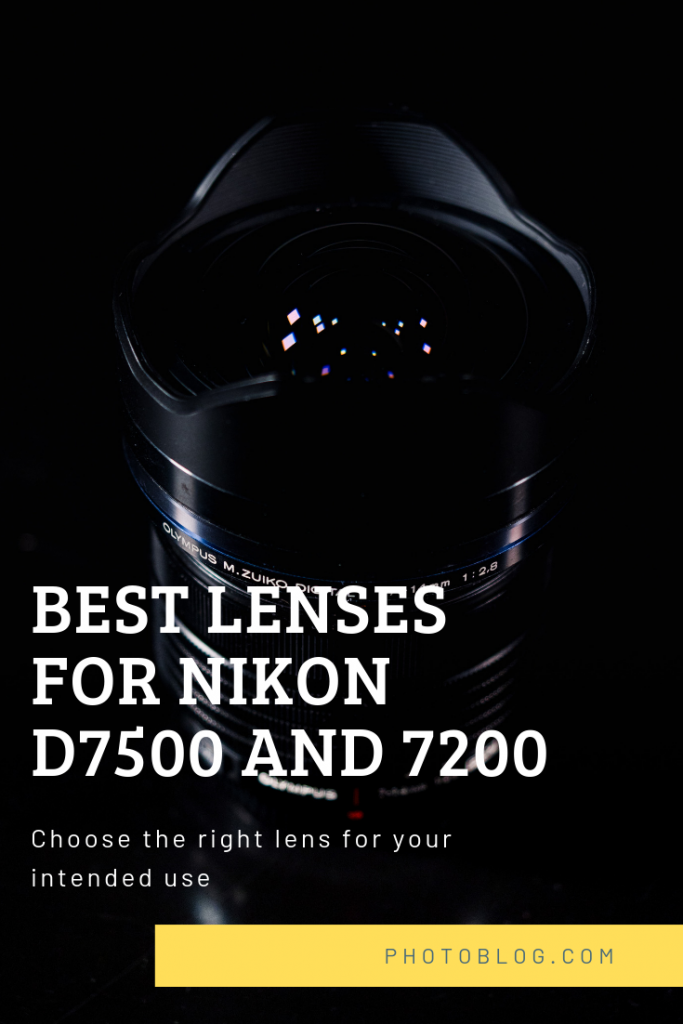
Now that you’ve finished this article, you’re a better photographer.
Guaranteed.
But the fact is, the journey doesn’t stop there. There are more tips, tricks, and secrets–all of which will help you take gorgeous photos.
And if you want to learn all of these secrets, I recommend you sign up for the PhotoBlog newsletter. We send our subscribers all sorts of great stuff–including the tips, tricks, and secrets, straight from the experts. All to help you capture world-class photographs.
Did I mention that it’s all totally FREE?
(Oh, and we’ll send you a natural lighting cheat sheet–designed to help you use light in ways you’ve never considered.)
So to start taking stunning photos, enter your email:
Download FREE Photography Lighting Cheat Sheet
Subscribe and get a free downloadable photography lighting cheat sheet
